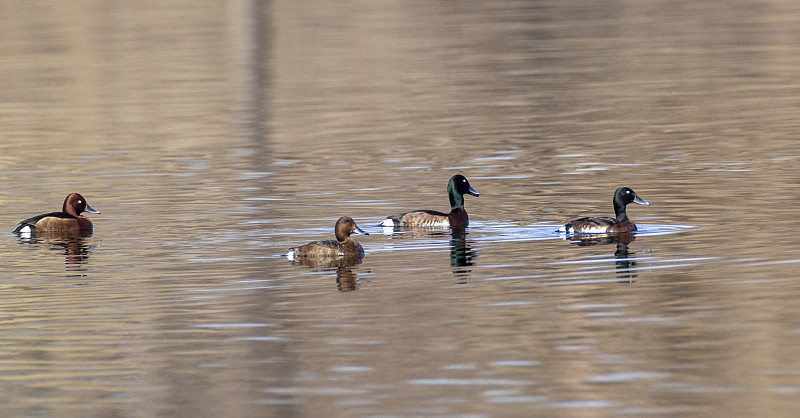Endangered Baer's Pochards Fly Back to Yeya Lake in Yanqing, Beijing Earlier than Previous Years

[Photo via VCG]
This early spring, temperatures have warmed up in Yanqing, causing the ice and snow to melt in Yeya Lake. The lake is consistently a hotspot for migratory birds year after year. Herons and Baer's pochards have recently been spotted via infrared monitoring spots. In comparison to previous years, migratory birds flew back to Yeya Lake a few days to half a month earlier than usual.
Baer's pochard is a critically endangered species and a national first-class protected wild animal. There are just over 1,000 left in the wild worldwide. At present, four returning Baer's pochards have been monitored at Yeya Lake in Yanqing.
More than 300 herons have been sighted by the monitoring system in Yeya Lake Wetland Nature Reserve's northern area where herons propagate. In spring, herons migrate to breeding sites from late March to early April. This year, thanks to the warm weather, a large number of herons have now flown back to Yeya Lake and currently some are nursing newly hatched chicks.
Concurrently, dozens of common cranes, whooper swans and tens of thousands of wild ducks such as gadwalls, Baer's pochards and Baikal teals have been spotted at Yeya Lake. In addition, thousands of bean geese, swan geese, hundreds of black-headed gulls and northern lapwings, and other migratory birds have also been observed.
Currently, the Management Office of Nature Reserves of Yanqing District has set up high-definition video surveillance cameras throughout the entire nature reserve. Meanwhile, it has piloted a system collecting and recording birds' sounds and an identification system using AI models to improve the capabilities of automated monitoring, analysis, counting, and categorization of birds in the reserve.
(Source: Beijing Daily)

